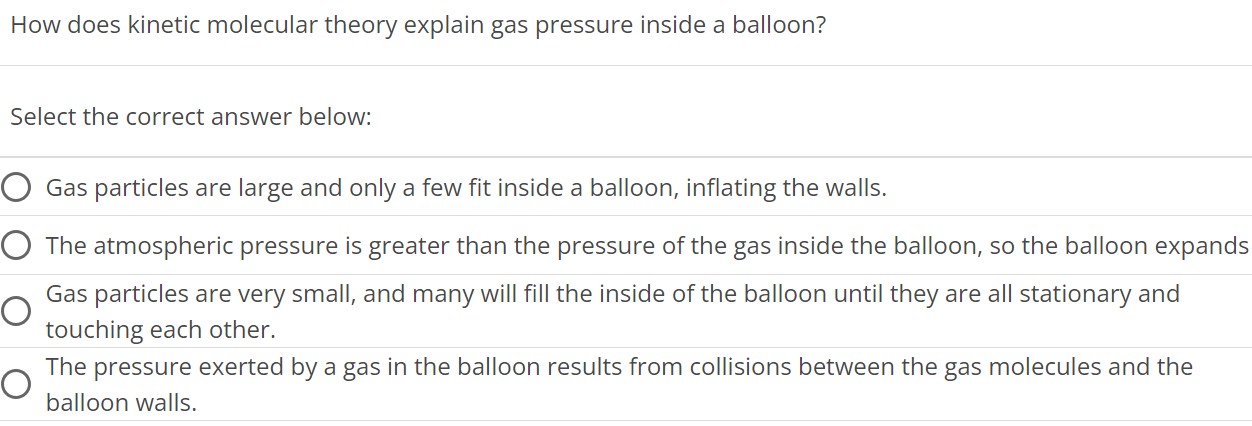How does kinetic molecular theory explain gas pressure inside a balloon? Select the correct answer below: Gas particles are large and only a few fit inside a balloon, inflating the walls. The atmospheric pressure is greater than the pressure of the gas inside the balloon, so the balloon expands Gas particles are very small, and many will fill the inside of the balloon until they are all stationary and touching each other. The pressure exerted by a gas in the balloon results from collisions between the gas molecules and the balloon walls.
